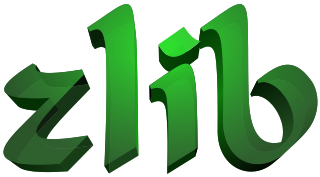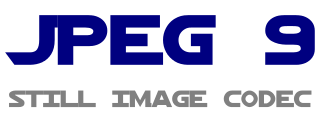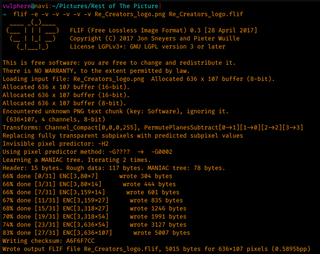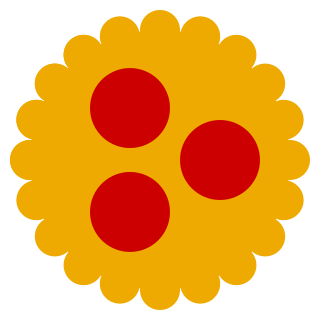Related Research Articles

JPEG is a commonly used method of lossy compression for digital images, particularly for those images produced by digital photography. The degree of compression can be adjusted, allowing a selectable tradeoff between storage size and image quality. JPEG typically achieves 10:1 compression with little perceptible loss in image quality. Since its introduction in 1992, JPEG has been the most widely used image compression standard in the world, and the most widely used digital image format, with several billion JPEG images produced every day as of 2015.
JPEG Network Graphics is a JPEG-based graphics file format which is closely related to PNG: it uses the PNG file structure as a container format to wrap JPEG-encoded image data.

PostgreSQL, also known as Postgres, is a free and open-source relational database management system (RDBMS) emphasizing extensibility and SQL compliance. It was originally named POSTGRES, referring to its origins as a successor to the Ingres database developed at the University of California, Berkeley. In 1996, the project was renamed to PostgreSQL to reflect its support for SQL. After a review in 2007, the development team decided to keep the name PostgreSQL and the alias Postgres.

Portable Network Graphics is a raster-graphics file format that supports lossless data compression. PNG was developed as an improved, non-patented replacement for Graphics Interchange Format (GIF)—unofficially, the initials PNG stood for the recursive acronym "PNG's not GIF".

zlib is a software library used for data compression as well as a data format. zlib was written by Jean-loup Gailly and Mark Adler and is an abstraction of the DEFLATE compression algorithm used in their gzip file compression program. zlib is also a crucial component of many software platforms, including Linux, macOS, and iOS. It has also been used in gaming consoles such as the PlayStation 4, PlayStation 3, Wii U, Wii, Xbox One and Xbox 360.

Image compression is a type of data compression applied to digital images, to reduce their cost for storage or transmission. Algorithms may take advantage of visual perception and the statistical properties of image data to provide superior results compared with generic data compression methods which are used for other digital data.

libjpeg is a free library with functions for handling the JPEG image data format. It implements a JPEG codec alongside various utilities for handling JPEG data. It is written in C and distributed as free software together with its source code under the terms of a custom permissive (BSD-like) free software license, which demands attribution. The original variant is maintained and published by the Independent JPEG Group (IJG). Meanwhile, there are several forks with additional features.
The Extensible Metadata Platform (XMP) is an ISO standard, originally created by Adobe Systems Inc., for the creation, processing and interchange of standardized and custom metadata for digital documents and data sets.
An image file format is a file format for a digital image. There are many formats that can be used, such as JPEG, PNG, and GIF. Most formats up until 2022 were for storing 2D images, not 3D ones. The data stored in an image file format may be compressed or uncompressed. If the data is compressed, it may be done so using lossy compression or lossless compression. For graphic design applications, vector formats are often used. Some image file formats support transparency.
A camera raw image file contains unprocessed or minimally processed data from the image sensor of either a digital camera, a motion picture film scanner, or other image scanner. Raw files are so named because they are not yet processed, and contain large amounts of potentially redundant data. Normally, the image is processed by a raw converter, in a wide-gamut internal color space where precise adjustments can be made before conversion to a viewable file format such as JPEG or PNG for storage, printing, or further manipulation. There are dozens of raw formats in use by different manufacturers of digital image capture equipment.
Lossless JPEG is a 1993 addition to JPEG standard by the Joint Photographic Experts Group to enable lossless compression. However, the term may also be used to refer to all lossless compression schemes developed by the group, including JPEG 2000 and JPEG-LS.
Kosmo is a desktop geographic information system (GIS) with advanced functions. It is the first of a series of developments that are being made available to the community.
JPEG XR is an image compression standard for continuous tone photographic images, based on the HD Photo specifications that Microsoft originally developed and patented. It supports both lossy and lossless compression, and is the preferred image format for Ecma-388 Open XML Paper Specification documents.

EnterpriseDB (EDB), a privately held company based in Massachusetts, provides software and services based on the open-source database PostgreSQL, and is one of the largest contributors to Postgres. EDB develops and integrates performance, security, and manageability enhancements into Postgres to support enterprise-class workloads. EDB has also developed database compatibility for Oracle to facilitate the migration of workloads from Oracle to EDB Postgres and to support the operation of many Oracle workloads on EDB Postgres.

WebP is a raster graphics file format developed by Google intended as a replacement for JPEG, PNG, and GIF file formats. It supports both lossy and lossless compression, as well as animation and alpha transparency.

Free Lossless Image Format (FLIF) is a lossless image format claiming to outperform PNG, lossless WebP, lossless BPG and lossless JPEG 2000 in terms of compression ratio on a variety of inputs.

Guetzli is a freely licensed JPEG encoder that Jyrki Alakujala, Robert Obryk, and Zoltán Szabadka have developed in Google's Zürich research branch. The encoder seeks to produce significantly smaller files than prior encoders at equivalent quality, albeit at very low speed. It is named after the Swiss German diminutive expression for biscuits, in line with the names of other compression technology from Google.
JPEG XT is an image compression standard which specifies backward-compatible extensions of the base JPEG standard.
References
- ↑ Ghosh, Rishab Aiyer; Prakash, Vipual Ved (2000-05-10). "The Orbiten Free Software Survey" (PDF). First Monday. 5 (7). doi:10.5210/FM.V5I7.769. S2CID 39707130. Archived from the original (PDF) on 2020-02-16. (The Orbiten Free Software Survey)
- ↑ Hankerson, Darrel R.; Harris, Greg A.; Johnson, Peter Dexter (2003-02-26). Introduction to Information Theory and Data Compression. CRC Press. ISBN 9781584883135.
- ↑ "PostgreSQL.org website".
- ↑ Boutell, Thomas; Lane, Tom (2011-09-29). "Portable Network Graphics (PNG) Specification and Extensions" . Retrieved 2020-07-30.
- ↑ "FileFormat.info website".
- ↑ "Ptolemy Project".
- ↑ "Tom Lane's Bio on PGCon 2011 The PostgreSQL Conference Speaker Page". 18 September 2015.
- ↑ "Multiprogramming in Model 520 BASIC" (PDF). Hewlett-Packard Journal . 35 (5): 2021. May 1984.
- ↑ "Ptolemy Project website".
- ↑ Lane, Tom (31 July 2000). "Announcement: I'm joining Great Bridge".
- ↑ Bezroukov, Nikolai (1 July 2004). "The Sunset of Linux Hype". Portraits of Open Source Pioneers.
Norfolk, Va., September 6, 2001 – Great Bridge LLC, the company that pioneered commercial distribution and support of the PostgreSQL open source database, announced today that it has ceased business operations
- ↑ Lane, Tom (27 November 2001). "Announcement: I've joined Red Hat".
- ↑ Berkus, Josh (10 June 2013). "A report from pgCon 2013". LWN.net.
- ↑ Finley, Klint. "Salesforce Nabs Open Source Database Guru For War On Oracle". Wired. Retrieved 23 May 2013.
- ↑ "Crunchy Data Welcomes Open Source Pioneer Tom Lane" (Press release). Retrieved 28 October 2015.
- ↑ "Tom Lane: changing employers".
- ↑ "PostgreSQL: Contributor Profiles" . Retrieved 3 May 2013.
- ↑ "JPEG.org Homepage". 2008-09-14. (www.jpeg.org)
- ↑ Law, Gillian (2002-07-02). "Forgent claims JPEG patent; others cry foul". NetworkWorld. Archived from the original on 2012-04-02. Retrieved 2007-09-11.
- ↑ Lane, Tom (2004-11-19). "pgsql-hackers forum" . Retrieved 2007-09-11.
- ↑ "The Only Coke Machine on the Internet".
- ↑ Lane, Tom (16 Feb 2007). "Re: Database performance comparison paper".
- ↑ Stephane, Peter. "Doom 3 Readme File" . Retrieved 2020-07-30.
- ↑ "JPEG.org". 2008-09-14.